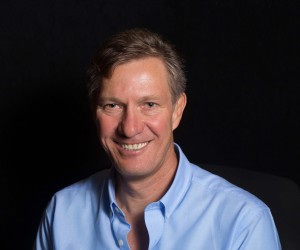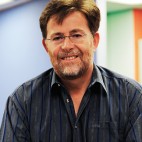If you take the nuclear debate for example, if you had to cost the closure of a nuclear plant, with all the rehab and toxic waste disposal, you’d be looking at something like 20 years of production profit to cover that cost.
So it’s a double edged sword, as the economy needs development and energy supplies, but can’t afford aspects of the environmental impacts after the fact. That’s why renewable energy is an attractive option. The same thought can be placed into the mining realm. Do we really know long term effects of today’s profits?
Respected companies like Digby Wells Environmental are tasked with mapping out a sustainable future for mining companies. The company was formed in January 1995 by three partners – Digby Wells, Ken van Rooyen and Graham Trusler – all three previously from the Environmental Management Department of Rand Mines.
Trusler, current CEO of Digby Wells is an expert in this field and elaborates in an interview with Gregory Simpson at their well attended sustainability breakfast at the Indaba. “Mine closure traditionally has been a real discussion on what you do with the pit and the shaft and the tailing stands, it’s so much more than that and social issues are now dominating.
“Mining companies should be gearing up by talking to their communities. What should the area look like after closure? Sometimes there shouldn’t be development projects, sometimes there should be near the mine but I think dialogue and planning is what’s needed.”
The key is really to get the best balance between profitability and looking after Mother Nature with a long term sustainability theme.
“We don’t see it as mutually exclusive, if you don’t look after Mother Nature you’re not going to have a sustainable industry, you’re not going to get community or government support so it’s part of the normal business to ensure there’s a balance between the benefits going to shareholders, to the local community and to the government, who should be providing and enabling frameworks so that you could do your business.
Flow of capital in Africa
He continues, “The money goes where the government supports the mining projects, so we’ve seen that tremendous influence on the projects. We’re working in jurisdictions where people are trying to encourage development, encourage mining companies to come in, and the money does flow there. If people make it difficult to invest or don’t want investors, the money won’t go there.
The implementation for proper planning, communication and cartography, with the help of new technology often sets the winners and losers apart from each other.
He reflects, “Electronic communications has helped. A lot of the places we go now have cell phone coverage which they never had before so communities have much more access to information. We’re using a lot more GIS ways of doing things, covering large areas of mapping and we’re also trying to combine that with what the companies are doing on the exploration front and on a social or environmental front. You just fly the area once, map it properly and use the geology to do your mine planning properly.
With mining north of the boarder picking up, leaving South Africa to work out her problems in the dust, Trusler outlines his key growth areas for the coming months. “The Congo is going to do very well. When the Ebola crisis gets sorted out a lot of the West African growth is going to happen. Liberia is going to carry on with her growth trajectory. Guinea hopefully, with political stability and certainty will be a good place to invest in. Angola has huge potential but is difficult to do business.
Trusler believes it is important to have the right attitude to do business in Africa, making friendlier relationships with the locals is half the battle. The days of relying on your brand image from South Africa is no longer enough. Africans want to feel that they have a stake in the business.
“The first thing is to realise that you’re a guest in their country and we go not knowing it all, but we try and forge local partnerships, get local employees, speak to local communities. We cannot come in as a foreign company to work there, we’ve got to do it in collaboration with local consultancies, local communities.
There’s been a lot of talk about mechanisation in recent times, fuelled by labour unrest and high wages. Trusler is in no illusion that mechanisation is the way forward.
“The rise of unionism and increasing wages has been good in some respects, in others there have been a lot of job losses so people will be more highly trained in the mines but the benefits for the communities won’t come from secondary businesses, but spinoff businesses.
Opportunities and challenges for 2015
He muses, “I think 2015 is going to be focused on commodity prices, and the low prices are going to get reflected in some projects being pulled in areas. Uranium is low; iron ore is low so those projects will battle to continue.
"The gold price is still good and the decrease in oil prices is going to decrease energy costs so a lot of projects which were energy intensive might now go ahead. People in the platinum industry are going to work together a lot more, be it South Africa or Zimbabwe, there’s a realisation that it’s got to be a group solving the problem, not individual companies.” he concludes.
Gregory Simpson










